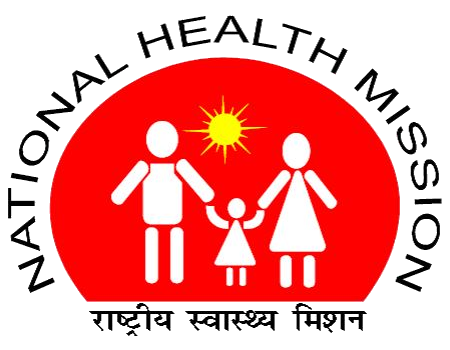NATIONAL IODINE DEFICIENCY DISORDERS CONTROL PROGRAMME
Government of India launched NGCP (National Goitre Control Programme) in 1962, with focus on providence of Iodised salt in identified endemic areas. The nomenclature of the Programme was changed in August 1992 to NIDDCP (National Iodine Deficiency Disorders Control Programme) to emphasize wider implication of Iodine deficiency.
The World Health Assembly (WHA) adopted in 1991 the goals of elimination of Iodine deficiency as a public health problem by 2000 A.D. In 1992, WHO & UNICEF recommended Universal Salt Iodisation (USI) as the main strategy to achieve elimination of IDD.
Programme focuses on the following.
1.Survey of IDD Prevalence
2.Production of Iodated salt with minimum 30 PPM.
3.Monitoring system to ensure supply of iodated salt with not less than 15ppm.
4.Creating demand by consumers for iodated salt.
NIDDCP IN MIZORAM
NIDDCP was launched in Mizoram in the Directorate of Health Services Mizoram with the establishment of IDD cell in the year 1987.
STAFF POSITION: 1. Programme Officer
2.Technical Officer
3.Statistical Assistant
4.LDC/Data Entry Operator
5.Laboratory Technician
6.Laboratory Assistant.
ACTIVITIES UNDER NIDDCP IN MIZORAM
(a)Awareness Campaign/ Training for Teachers, and NGO’s in every District.
(b)Orientation Meeting / Advocacy Meeting on IDD at the State level, District level, Sub Division level, Block level including Village Leaders.
(c) Distribution of Leaflets and displays of Posters
(d) Public awareness through different media’s.
MONITORING OF IODISED SALT:
Technicians collected Household, wholesale and retail Salt samples for testing Iodine content every Month. Report is then sent to G.O.I. The samples collected are tested in two ways in the iodine Laboratory.
(i) Titration Method
(ii) Spot testing by using MBI kit.
No. Salt sample collected and tested by spot testing kits
Year | No. of sample tested | Sample above 15ppm | Percentage |
2008-09 | Nil due to non-availability of MBI Kits | ||
2009-10 | Nil due to non-availability of MBI Kits | ||
2010-11 | 11606 | 11025 | 94.9% |
2011-12 | 69704 | 67618 | 97.0% |
2012-13 | 74150 | 73400 | 98.8% |
2013-14 | 28623 | 27762 | 96.9% |
2014-15 (upto 3rd qrtrs) | 31813 | 31227 | 98.1% |
TITRATION METHOD
Year | No. of sample tested | Sample above 15ppm | Percentage |
2008-09 | 582 | 571 | 98.1% |
2009-10 | 527 | 495 | 93.9% |
2010-11 | 525 | 503 | 95.8% |
2011-12 | 2319 | 2297 | 99.0% |
2012-13 | 3415 | 3380 | 98.9% |
2013-14 | 6118 | 6118 | 100% |
2014-15 (upto 3rd qrtrs) | 4167 | 4157 | 100% |
MONITORING OF IODINE CONTENT OF URINE:
This process was started from 2003 after setting up proper Iodine Monitoring Laboratory at the Directorate of Health Services.
This is being done by collecting Urine samples from School Children and tested in the Iodine Laboratory at the Directorate.
Year | No. of sample tested | Sample below 100 ug/L | Sample above 100 ug/L |
2008-09 | 282 | 0 | 282 |
2009-10 | 294 | 0 | 294 |
2010-11 | 233 | 0 | 233 |
2011-12 | 500 | 0 | 500 |
2012-13 | Nil (due to lack of reagent) | ||
2013-14 | 741 | 0 | 741 |
2014-15 (upto 3rd qrtrs) | 1925 | 0 | 1925 |
GLOBAL IDD DAY:
This important day is being observed every year particularly to create Awareness on IDD and importance of Iodized salt by using various Media’s.
GOITRE SURVEY:
A number of surveys on IDD have been carried out since 1978.
Year | District | No. of person examine | Percentage |
2007-08 | Serchhip (Oct 07) | 3305 | 16.1% |
2009-10 | Aizawl (Apr 09) | 9901 | 17.1% |
2009-10 | Saiha (May 09) | 6240 | 13.6% |
2009-10 | Lunglei (Jul 09) | 6074 | 14.7% |
2009-10 | Lawngtlai (Aug 09) | 7398 | 12.3% |
2009-10 | Mamit (Sep 09) | 2653 | 20.3% |
2009-10 | Kolasib (Oct 09) | 2227 | 13.2% |
2009-10 | Champhai (Nov 09) | 2022 | 13.6% |
2009-10 | Serchhip (Jan 10) | 1490 | 9.4% |
2010-11 | Lunglei (Apr 10) | 2258 | 9.0% |
2010-11 | Aizawl E (Dec 10) | 3562 | 5.5% |
2010-11 | Aizawl W (Dec 10) | 3515 | 5.3% |
2010-11 | Serchhip (Feb 11) | 1809 | 5.03% |
2011 | Lawngtlai (Apr) | 1501 | 7.2% |
2011 | Saiha (Apr) | 1392 | 8.1% |
2011 | Kolasib (Oct) | 2109 | 9.6% |
2013 | Aizawl East | 3634 | 4.98% |
2013 | Aizawl West | 3137 | 4.81% |
2013 | Champhai | 3851 | 6.13% |
2013 | Lawngtlai | 2335 | 3.64% |
2013 | Lunglei | 3314 | 13.31% |
2013 | Mamit | 2101 | 3.76% |
INFORMATION RECEIVED FROM THE DISTRICTS
Monthly reports on monitoring of iodine content of salt by spot testing Kits are regularly received from the Districts.
Goal:
1) Reduced prevalence of IDD below 10% in the entire country and below 5% in the state by 2014 AD.
2) To ensure 100% consumption of adequately Iodised Salt(15PPM) at the household level.
Current Status: The Household consumption of Iodised Salt in Mizoram is 98.8%.
 NHM Mizoram
NHM Mizoram